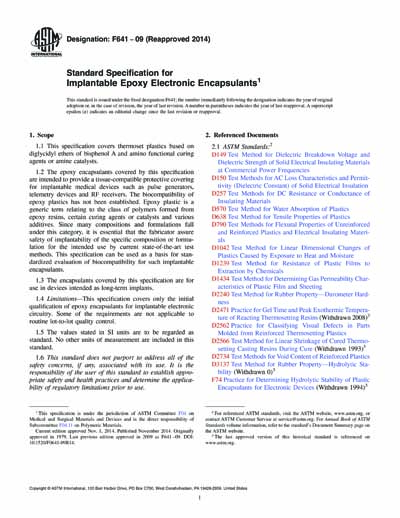Historical
ASTM F641-09(2014)
Standard Specification for Implantable Epoxy Electronic Encapsulants
1.1 This specification covers thermoset plastics based on diglycidyl ethers of bisphenol A and amino functional curing agents or amine catalysts.
1.2 The epoxy encapsulants covered by this specification are intended to provide a tissue-compatible protective covering for implantable medical devices such as pulse generators, telemetry devices and RF receivers. The biocompatibility of epoxy plastics has not been established. Epoxy plastic is a generic term relating to the class of polymers formed from epoxy resins, certain curing agents or catalysts and various additives. Since many compositions and formulations fall under this category, it is essential that the fabricator assure safety of implantability of the specific composition or formulation for the intended use by current state-of-the-art test methods. This specification can be used as a basis for standardized evaluation of biocompatibility for such implantable encapsulants.
1.3 The encapsulants covered by this specification are for use in devices intended as long-term implants.
1.4 Limitations—This specification covers only the initial qualification of epoxy encapsulants for implantable electronic circuitry. Some of the requirements are not applicable to routine lot-to-lot quality control.
1.5 The values stated in SI units are to be regarded as standard. No other units of measurement are included in this standard.
1.6 This standard does not purport to address all of the safety concerns, if any, associated with its use. It is the responsibility of the user of this standard to establish appropriate safety and health practices and determine the applicability of regulatory limitations prior to use.
ASTM International [astm]

